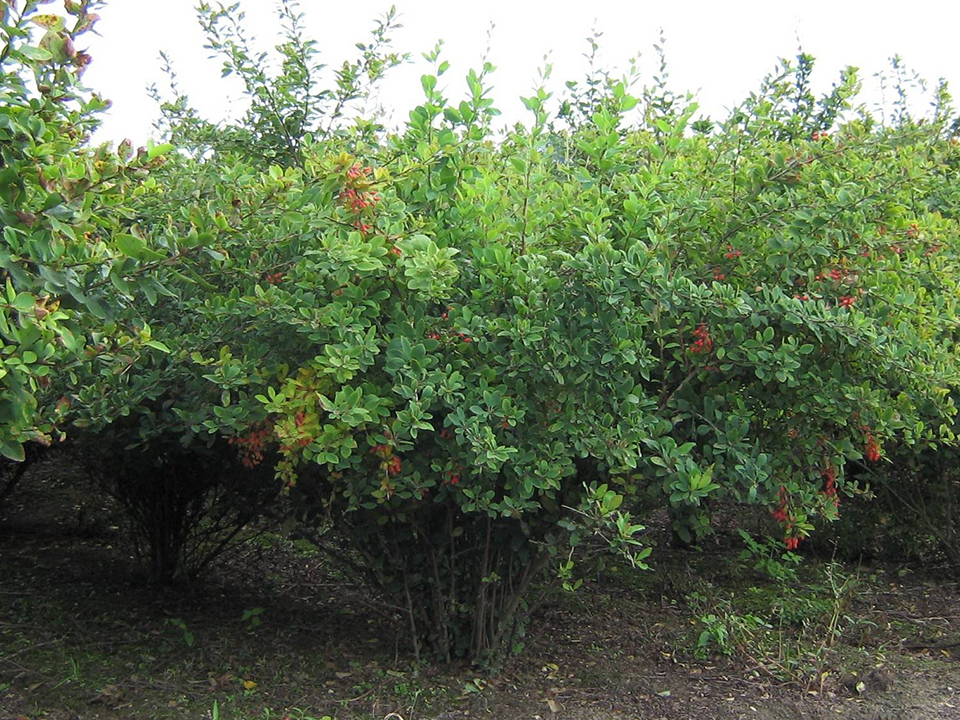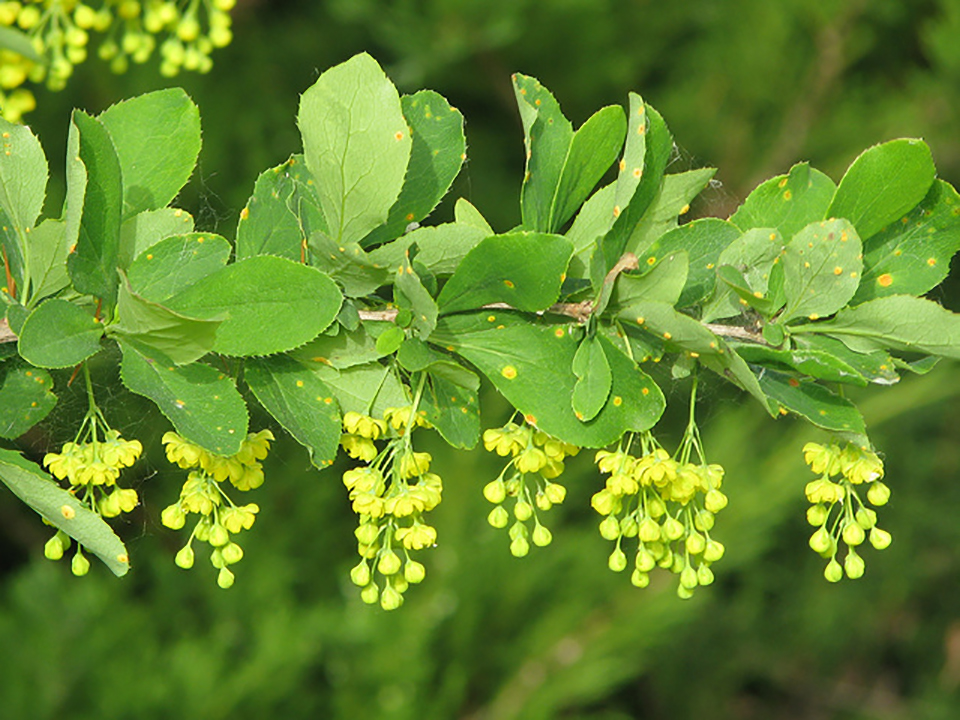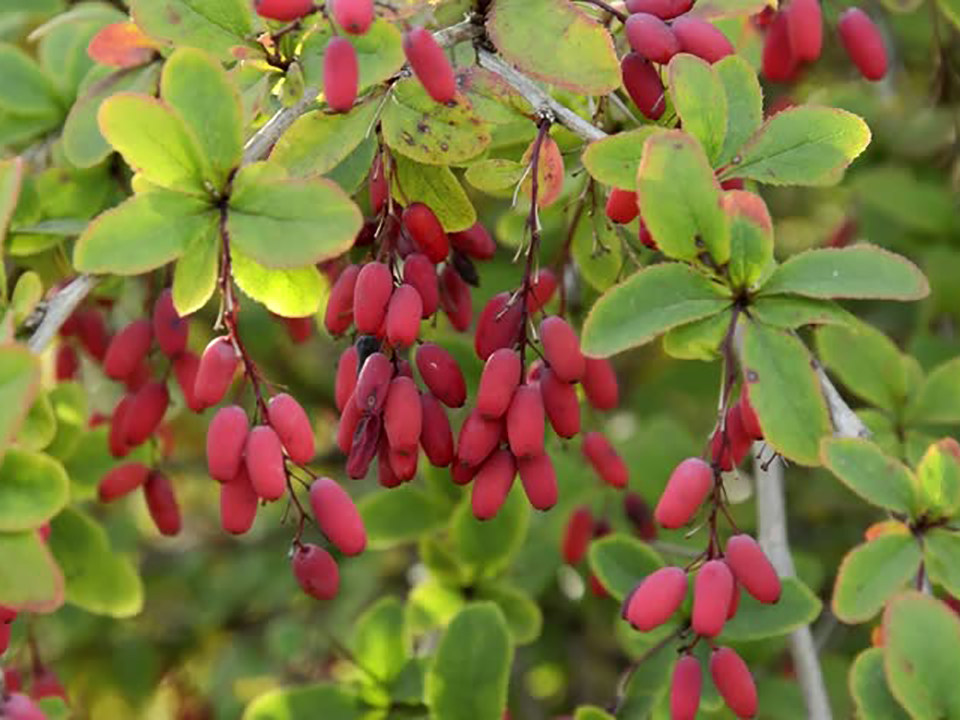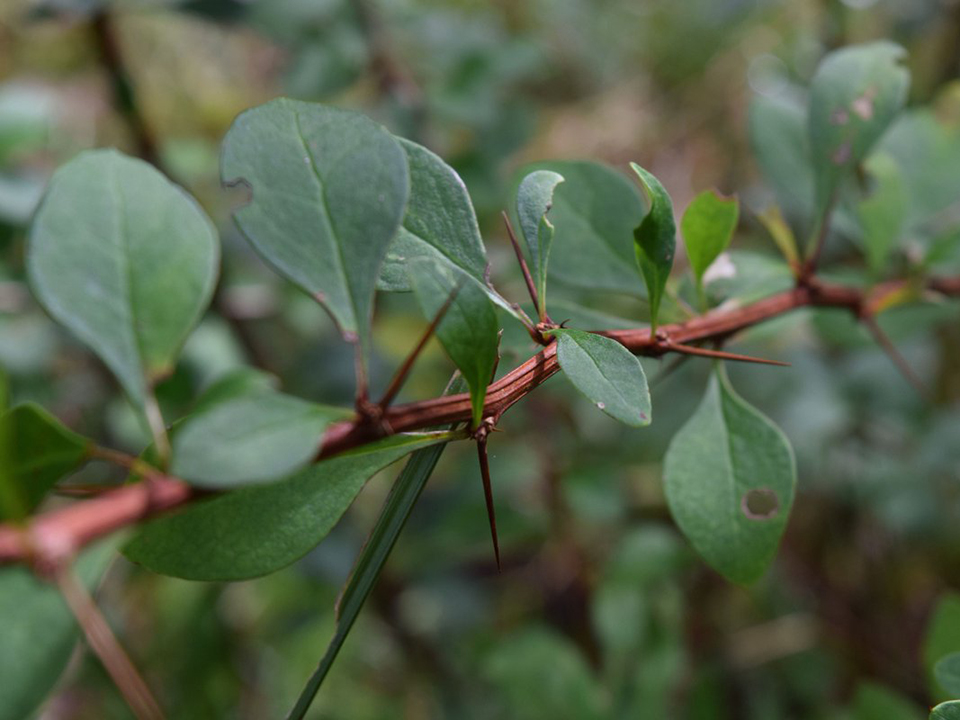
Common barberry produces numerous long slender arching stems
Species Name: Berberis Vulgaris
Common Name: Common Barberry, European Barberry
Origin: Native to central and southern Europe, northwest Africa, western Asia.
Distribution: Grows in the understory of woodlands throughout the northeast. Was once extensively planted for hedging and ornamental uses but is seldom planted today.
Identification: Common barberry is a large multi-stemmed shrub reaching 10 to 13ft tall. Stems are lined with whorls of 3 to 5 small oval leaves encompassing 3 pronged spines. Stems emerge from the base in tall arching curves. The plant is much taller and growth habit is larger than the related Japanese barberry. Yellow flowers line the stems in spring in short hanging racemes followed by bright red fruits in 1 to 3” long hanging clusters.
Diagnostic characteristics:
Whorls of tiny bright green oval leaves with accompanying spines are diagnostic.
Plants leaf out earlier than native plants in spring.
Burgundy fall color persists into late fall and early winter making identification easy.
In winter look for the spines covering the bare stems.
Cut stems reveal bright yellow pith that no other plant has.
Biology and Spread: Barberry is tolerant of a wide range of soils, moisture and shade. Prolific fruit production enables it to colonize quickly.
Ecological threats: The shade tolerance of barberry allows it to rapidly invade the understory of woodlands shading out native species. It produces large quantities of fruit that are readily eaten and spread by birds. Deer and other herbivores do not eat barberry. Where deer population are high, deer will selectively browse only native shrubs encouraging the domination of barberry.
Control methods:
1) Cut Stump Treatment:
Cut stump treatment is the best method for controlling large and small common barberry. A brush saw is the most efficient tool for cutting barberry because of the sharp spines and large stiff stems. Each cut stem needs to be treated with a herbicide to prevent resprouting. A 10% to 15% solution of glyphosate (the active ingredient in Round-up) is applied to the cut surface. A hand held spray bottle works well for applying the herbicide to the cut stem. Add a spray colorant to the bottle so you can tell which stems have been treated. For a few plants loppers may be used but remember to treat each cut stem. Large stems may be cut with a chain saw.
2) Foliar treatments
Small barberry seedlings may be more efficiently controlled using a foliar herbicide spray. Wait until mid to late summer. Spray the foliage thoroughly with herbicide. Use a 2% solution of glyphosate with a spray adjuvant.
3) Manual Control
Common barberry has a strong root system which prevents it from being easily pulled by hand. Small plants may be chopped or dug out by the roots.

Common barberry produces numerous long slender arching stems

Clusters of yellow flowers in hanging racemes in early spring.

Bright red fruits in hanging clusters. Birds eat the fruit and disperse the seed into surrouding landscapes.

Noted the sharp spines at the base of the each leaf clusters. The spines are an easy clue to identification.